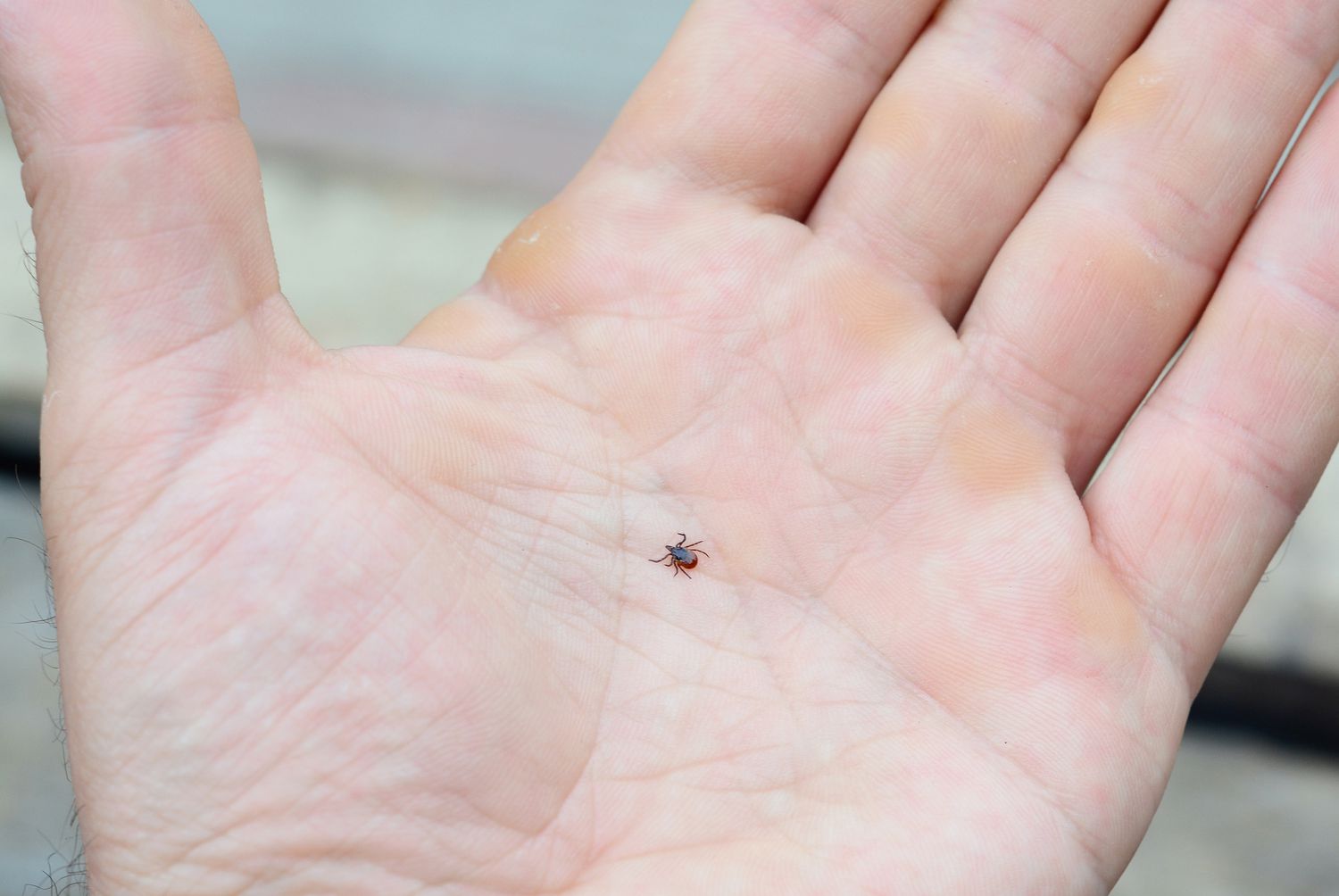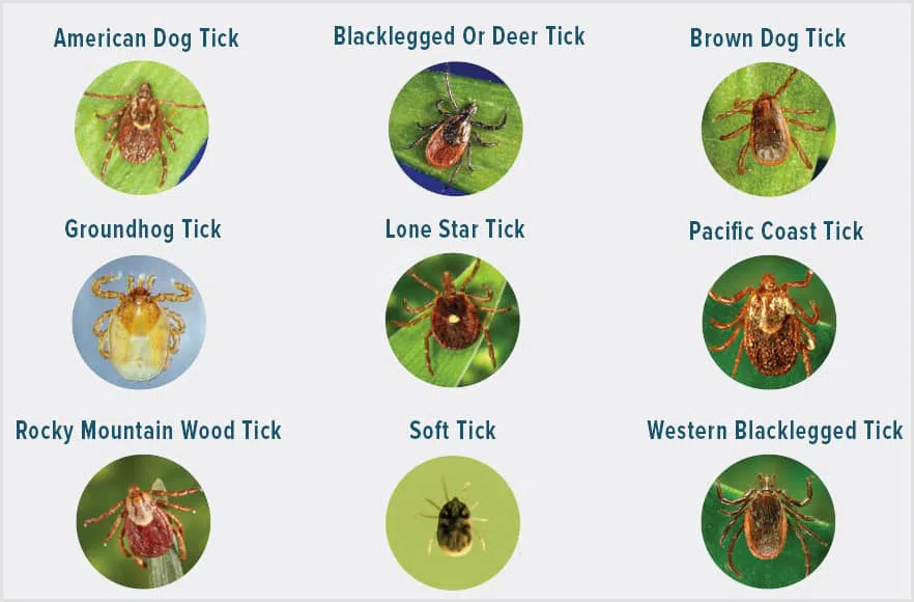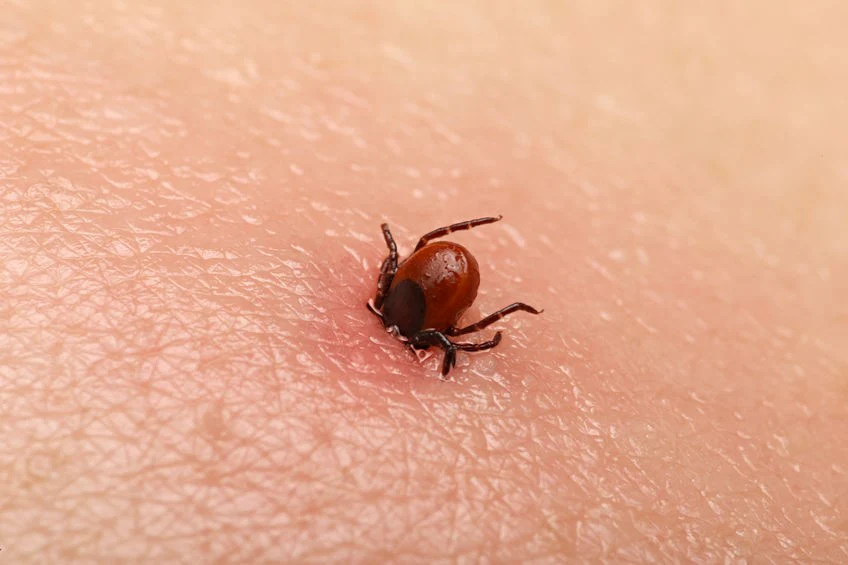Florida’s subtropical climate—defined by warmth, humidity, and mild winters—allows ticks to thrive almost year-round. Unlike colder regions, where winter frosts significantly reduce tick activity, Florida’s gentle cold season barely slows their life cycle. In cities like Melbourne—where suburban homes merge with tourist hotspots and natural areas—ticks can quietly establish themselves in shady lawns or on pets, eventually moving indoors if overlooked. This service page highlights why ticks flourish in Florida’s environment, common signs of a tick problem, and why working with a professional tick exterminator offers the most effective path to sustained relief from these persistent pests.
Whether you reside in Melbourne or manage properties in Melbourne Beach, Cocoa Beach, Cocoa, Cape Canaveral, Merritt Island, or Rockledge, recognizing early tick indications—and promptly seeking solutions—helps protect people, pets, and your property from itchy bites and possible diseases, sparing you the strain of recurring do-it-yourself attempts.
Why Ticks Thrive in Florida
Mild Winter Temperatures
Many tick species in the U.S. experience population dips during freezing weather. Florida’s mild winters rarely produce extended frosts, enabling ticks to remain active and seek hosts throughout all seasons. Buildings with heating or air conditioning further sustain cozy conditions, letting ticks stay viable indoors, especially on pets or in carpeting.
High Humidity
Ticks rely on moisture for their eggs and larval stages to survive. Florida’s humid environment, frequent rainfall, and irrigated landscapes keep soils damp. Shady yard areas, leaf litter, or thick mulch remain moist, offering larvae a safe habitat to mature. Even slight moisture around AC units or leaky hose bibs can support tick development.
Abundant Hosts
Ticks feed on blood from warm-blooded animals—commonly dogs, cats, raccoons, opossums, deer, or humans. In suburban enclaves like Melbourne Beach or Merritt Island, wildlife wandering through yards, or pets venturing outside, can unwittingly bring ticks closer to your home. Once attached, ticks may drop off indoors, perpetuating the cycle in carpets or pet bedding.
Constant Movement of People and Pets
Florida’s tourism, relocations, and robust pet ownership keep ticks circulating among neighborhoods. Whether introduced by travelers’ luggage, pet crates, or secondhand furniture, a tick or two can reproduce rapidly if conditions remain welcoming. Multi-unit dwellings or frequent occupant turnover—like short-term rentals near Cocoa Beach—can inadvertently shuttle ticks between units or guests.
Multiple Tick Species
While various ticks inhabit Florida, four stand out:
- American Dog Tick: Prefers grassy, sunny zones and often latches onto dogs or passing humans.
- Brown Dog Tick: Can live and breed entirely indoors, crawling up walls or hiding in baseboards.
- Lone Star Tick: Distinctive white spot on females, can transmit multiple illnesses if attached long enough.
- Blacklegged Tick (Deer Tick): A known Lyme disease vector, though Lyme is less prevalent in Florida than in northern areas.
Any of these species can become problematic, especially if not addressed promptly when discovered.

Telltale Signs of a Tick Infestation
- Excessive Pet Scratching or Biting
- Dogs or cats gnawing at themselves, especially near necks or hindquarters.
- Close inspection of your pet’s fur might reveal small, dark-brown ticks clinging to the skin.
- Dogs or cats gnawing at themselves, especially near necks or hindquarters.
- Fleas or Ticks on Clothing or Skin
- Ticks climb from grass or foliage onto ankles and socks.
- Feeling a small, seed-like bump that won’t brush off easily could be a feeding tick.
- Ticks climb from grass or foliage onto ankles and socks.
- Indoor Tick Sightings
- Brown dog ticks can complete their life cycle indoors, scattering in carpets, behind furniture, or crawling on walls.
- Observing ticks repeatedly indoors signals an established breeding population requiring urgent action.
- Brown dog ticks can complete their life cycle indoors, scattering in carpets, behind furniture, or crawling on walls.
- Frequent Pet Discomfort
- If fleas or allergies are ruled out, ticks remain a prime suspect for ongoing pet itching.
- Some pets exhibit lethargy or decreased appetite if burdened by numerous ticks.
- If fleas or allergies are ruled out, ticks remain a prime suspect for ongoing pet itching.
- Wild Animal Presence
- Raccoons, stray cats, or opossums crossing your yard can drop ticks in shady spots, exposing pets or children later.
- Pet-luring bowls of food outside or unsecured trash can inadvertently invite wildlife that harbor ticks.
- Raccoons, stray cats, or opossums crossing your yard can drop ticks in shady spots, exposing pets or children later.
- Pale or Weak Pets
- Heavy tick loads can draw sufficient blood over time to cause anemia in smaller or younger animals.
- Signs include unusual lethargy, pale gums, or weight loss absent other explanations.
- Heavy tick loads can draw sufficient blood over time to cause anemia in smaller or younger animals.
Risks of Ignoring Ticks
Disease Transmission
Ticks are vectors for pathogens like Lyme disease, ehrlichiosis, or Rocky Mountain spotted fever. While Florida has lower Lyme incidence compared to northern states, the risk persists, especially if ticks attach for extended periods. Pets, too, face tick-borne ailments, potentially needing costly vet care.
Growing Populations
A single female tick lays hundreds (sometimes thousands) of eggs. In Florida’s mild winter, these eggs hatch throughout the year. Neglecting a minor tick issue gives them time to drop eggs in carpets or yards, leading to rapid expansions as new larvae and nymphs mature.
Constant Bites and Discomfort
Adult ticks feed on animal or human blood, causing itchy bite marks. Removing embedded ticks can be painful or require medical attention if ticks embed in difficult-to-reach spots. Repeated bites create occupant worry, undermining daily comfort.
Ongoing Cleanup Burdens
Untreated tick infestations prompt occupant attempts—excessive vacuuming, repeated dog baths, or environmental sprays. Without proper technique or synergy, these partial efforts often let eggs or pupae remain, fueling future outbreaks and occupant frustration.
Potential Pet Health Impact
Heavy tick burdens cause repeated biting, anemia, or hair loss. Tick-borne pathogens can cause serious pet illnesses or chronic conditions. Early occupant detection and prompt professional methods reduce the chance of advanced disease or expensive treatments.
Why a Professional Tick Exterminator Is Essential
Holistic Life Cycle Management
A tick exterminator addresses each stage—egg, larva, nymph, adult—using insect growth regulators (IGRs) plus adulticides for comprehensive control. Over-the-counter sprays may only kill visible adults, letting larvae or pupae persist. Professionals ensure newly hatched ticks also encounter lethal conditions.
Property-Wide Assessment
Specialists check lawns, fences, under shrubs, or near damp corners for hidden tick clusters. Indoors, they search furniture seams, carpets, or baseboard cracks. This systematic approach focuses insecticide or steam precisely, reducing occupant or pet chemical exposure.
Pet Integration
Professionals coordinate with homeowners on vet-recommended flea-and-tick preventatives. Treating yards or carpets alone won’t succeed if pets remain unprotected and keep reintroducing ticks from infested zones. This synergy (professional extermination + occupant pet care) yields lasting outcomes.
Strategic, Regulated Products
Misused or excessive tick chemicals can harm beneficial insects, children, or animals. Exterminators use licensed insecticides or granules specifically targeted to ticks, applying them where ticks develop—like shady yard corners or pet rest areas—rather than saturating living spaces.
Ongoing Follow-Up
Tick pupae can hatch weeks after initial steps. Re-checking occupant reports or yard conditions ensures new adults also meet lethal conditions, curbing any potential resurgence. Additional spot treatments or occupant education finalize the environment’s defense.

Typical Methods for Tick Treatments
- Inspection and Mapping
- Professionals note yards’ shady or damp areas, scanning under decks, fences, or mulched zones. Inside, they examine pet beds, carpets, or furniture for ticks.
- Confirming tick species (e.g., brown dog ticks) clarifies whether intense indoor focus or yard emphasis is critical.
- Professionals note yards’ shady or damp areas, scanning under decks, fences, or mulched zones. Inside, they examine pet beds, carpets, or furniture for ticks.
- Vacuuming and Steam
- Vacuums swiftly remove adult ticks, eggs, and larval debris from floors or upholstery.
- Steam’s high temperature kills ticks and eggs on contact—especially in fabrics.
- Vacuums swiftly remove adult ticks, eggs, and larval debris from floors or upholstery.
- Insect Growth Regulators (IGRs)
- IGRs block larvae from maturing into reproducing adults.
- Typically combined with adulticides that eliminate current adults, giving a one-two punch across the tick lifecycle.
- IGRs block larvae from maturing into reproducing adults.
- Targeted Yard Sprays or Granules
- Insecticidal sprays or granules applied around yard edges or shady corners, under shrubs, or near fences.
- Often water-activated, these products kill ticks dwelling at ground level or in leaf litter.
- Insecticidal sprays or granules applied around yard edges or shady corners, under shrubs, or near fences.
- Indoor Chemical Treatments
- Residual insecticides or dusts near baseboards, pet sleeping areas, or behind furniture hamper indoor ticks.
- Occupants must thoroughly launder pet bedding, vacuum daily, and monitor for stragglers.
- Residual insecticides or dusts near baseboards, pet sleeping areas, or behind furniture hamper indoor ticks.
- Pet Flea-and-Tick Prevention
- Occupants are advised to maintain veterinarian-approved topical, oral, or collar treatments for dogs or cats year-round.
- Regular grooming or combing helps reveal hidden ticks, removing them before feeding extensively.
- Occupants are advised to maintain veterinarian-approved topical, oral, or collar treatments for dogs or cats year-round.
- Follow-Up and Monitoring
- Pupae or eggs may hatch post-initial application. Re-checks ensure new ticks also encounter lethal insecticides or IGRs.
- If occupant sightings persist, additional spot treatments, occupant tips, or yard modifications occur until ticks fade completely.
- Pupae or eggs may hatch post-initial application. Re-checks ensure new ticks also encounter lethal insecticides or IGRs.
Service Areas: Melbourne, Melbourne Beach, Cocoa Beach, Cocoa, Cape Canaveral, Merritt Island, Rockledge
Though ticks adapt to many environments, this page covers solutions in or near Melbourne, a thriving city on Florida’s Space Coast. Our tick exterminator services also extend to:
- Melbourne Beach: Coastal properties with yards or beach access can see ticks arriving via strays, wildlife, or transported in occupant luggage.
- Cocoa Beach: A tourist favorite with frequent traveler turnover—tick eggs or nymphs can come in on crates, suitcases, or uninspected items.
- Cocoa: Mixing older neighborhoods with new expansions, each vulnerable to yard pests if occupant vigilance lapses or yard edges remain overgrown.
- Cape Canaveral: Known for space launches and cruises—tick-laden cargo or passenger belongings might slip in unnoticed.
- Merritt Island: Suburban enclaves near wetlands or the Indian River Lagoon, providing shade and moisture that ticks love.
- Rockledge: One of the region’s older cities, featuring historical homes and new builds, all susceptible if occupant or property upkeep remains incomplete.
No matter where you are, Florida’s gentle winters let ticks remain active in vegetation or on pets year-round. Early occupant detection plus specialized extermination ensures ticks won’t become a persistent property annoyance.

Why Choose Us
Florida-Based Strategies
We employ recognized flea-and-tick control tactics—like yard insecticide granules, interior IGRs, or occupant pet synergy—attuned to coastal or suburban Florida. We realize occupant lifestyle patterns, local humidity, and wildlife presence shape each property’s tick vulnerabilities, tailoring solutions accordingly.
Thorough Assessments
Our technicians investigate yards for tall grass, damp corners, or hidden eggs. Indoors, they check carpets, behind furniture, or pet sleeping spots for adult ticks. By quantifying the infestation’s severity, we set whether yard emphasis, interior emphasis, or both must be tackled.
Balanced, Regulated Applications
Professionals place insect growth regulators and adulticides exactly where ticks lurk, limiting occupant or pet chemical exposure. This measured approach terminates ticks across their entire life cycle while preserving occupant safety. We also coordinate occupant steps, e.g., washing pet bedding, vacuuming, or grooming animals frequently.
Pet Care Partnership
Since fleas—typo, sorry—ticks typically reach indoors via pets, occupant cooperation—like using vet-recommended preventatives and performing regular checks—remains pivotal. This synergy ensures newly acquired ticks off a dog or cat also face lethal yard or carpet conditions.
Follow-Up and Reassurance
Tick pupae can hatch weeks after an initial treatment. Our re-check or occupant feedback ensures newly emerged ticks also encounter lethal chemicals. If occupant sightings persist, we promptly adapt methods, reinforcing yard edges or applying indoor dusts until the property stands free of ticks.
Next Steps
Are you noticing your pets scratching excessively, spotting ticks crawling on floors, or worried about possible disease transmission from lurking ticks? Contact us to learn more or schedule your service. Our tick treatments in Melbourne, Melbourne Beach, Cocoa Beach, Cocoa, Cape Canaveral, Merritt Island, and Rockledge unite in-depth yard or indoor checks, regulated insecticides with IGRs, occupant-friendly guidelines, and essential follow-ups—eradicating ticks and hindering their return.
Acting swiftly spares you repeated occupant bites or pet health concerns, plus the inconvenience of ongoing vacuuming or do-it-yourself sprays. Lean on our Florida-informed tick exterminator know-how to neutralize these resilient pests in each life stage, reinstating comfort and protection for family, visitors, and beloved animals in Florida’s year-round mild climate.
Maintaining a Tick-Free Property
Once professionals cut down the resident tick population, occupant routines help prevent re-infestation:
- Trim Lawn and Shrubs
- Mow grass routinely, removing tall, shady zones ticks favor.
- Clear leaf litter or brush piles near fences or yard edges, limiting tick breeding areas.
- Mow grass routinely, removing tall, shady zones ticks favor.
- Wildlife Deterrence
- Keep trash bins sealed and avoid leaving pet food out overnight.
- Fences or motion lighting help reduce visits from stray animals that drop ticks in your yard.
- Keep trash bins sealed and avoid leaving pet food out overnight.
- Pet Preventatives
- Consistently use flea-and-tick collars, topicals, or oral meds on dogs or cats, following vet advice.
- Check fur—especially belly, ears, or neck—for newly attached ticks, removing them promptly.
- Consistently use flea-and-tick collars, topicals, or oral meds on dogs or cats, following vet advice.
- Vacuum and Steam Indoors
- Regularly vacuum carpets, rugs, and furniture, disposing of vacuum contents outside in sealed plastic bags.
- Steam cleaning kills eggs or larvae hidden in upholstery seams or thick carpets.
- Regularly vacuum carpets, rugs, and furniture, disposing of vacuum contents outside in sealed plastic bags.
- Wash Pet Bedding on Hot Cycles
- Weekly laundering of blankets, pillows, or soft toys in hot water and dryer settings kills eggs and larvae.
- Keep bedding in bright, airy spots, discouraging ticks from nesting in dark corners.
- Weekly laundering of blankets, pillows, or soft toys in hot water and dryer settings kills eggs and larvae.
- Eliminate Standing Water
- Fix leaking hoses, AC drips, or drainage issues that create damp pockets.
- Dry conditions hamper larvae survival, limiting tick expansions.
- Fix leaking hoses, AC drips, or drainage issues that create damp pockets.
- Monitor Re-Emergence
- If occupant sightings or pet biting recurs, contact an exterminator early to nip a small outbreak before it escalates.
- Reinspecting yard edges or adjusting insecticidal treatments ensures ticks can’t reclaim territory.
- If occupant sightings or pet biting recurs, contact an exterminator early to nip a small outbreak before it escalates.
By combining occupant diligence—like landscaping care, consistent pet preventatives, and vacuuming routines—with specialized tick elimination strategies, property owners across Melbourne, Melbourne Beach, Cocoa Beach, Cocoa, Cape Canaveral, Merritt Island, and Rockledge sustain a comfortable, tick-free environment. Even under Florida’s mild winters and near-constant humidity, integrated methods from both occupant and professional perspectives deter ticks from returning, keeping your home or business safe from itchy bites and potential diseases year-round.
